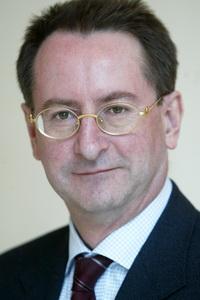Company faces battle for domestic market share with Huawei, ZTE
BEIJING: Over the last few years, Ericsson has been under increasing pressure to defend its position as the world's largest provider of technology and services to telecom operators. This comes as competition from Chinese rivals such as Huawei Technologies and ZTE Corp - two of China's biggest telecom equipment makers - grows in intensity around the world.
One senior executive charged with shouldering part of that burden is Mats Olsson, president of Ericsson Greater China, whose job it is to beat Chinese rivals on their home turf.

Mats Olsson, president of Ericsson Greater China, hopes to cash in on the 3G momentum.
"We did a very good job in China over the last year, although, we have had to face stiff competition from several domestic rivals," said the 56-year-old executive.
"We believe we will do a better job this year as the nation's 3G use gains momentum."
Olsson said that Ericsson has made significant growth here last year on Chinese telecom operators' demand for third generation (3G) network equipment.
He added that the company hopes to overtake Huawei Technologies to become the biggest player in China's WCDMA market in the next few years.
Over the past couple of decades, China has been one of Ericsson's biggest markets as the company dominated the country's telecom market in the 2G era. But its position in the country has been impacted in recent years by the rise of domestic rivals such as Huawei Technologies and ZTE.
The Chinese government's decision to develop its own 3G standard TD-SCDMA and adopt the CDMA2000 standard also weakened Ericsson's position, as the company did not have a strong presence in either technological area.
Olsson contends that Ericsson has yet to gain a significant share of the TD-SCDMA market because "it took a long time before our headquarters realized the importance of China's home grown 3G standard", and promised to further increase investment in that technology.
He refuted assertions that the company would enter China's CDMA market, despite the fact that Ericsson acquired Nortel's CDMA and LTE assets in North America last year.
"I think in the LTE market, the competition will be less fierce, but existing competition will still come from Chinese rivals," he said.
Ericsson worldwide sales decreased 9 percent last year due to the global economic slowdown, according to company figures. But its Asia Pacific sales increased 4 percent last year, boosted by major rollouts in countries like China, India and Japan.
Going on the offensive, Ericsson last month launched a series of operational restructuring measures and appointed Olsson to the company's Executive Leadership Team. He was also named head of the newly created "Ericsson China and North East Asia" region last month. That, Olsson said, demonstrates the increasing importance of China's market to the company.
Figures from research firm Frost & Sullivan shows Chinese telecom carriers spent 48 billion yuan on 3G network equipment since 2008, with China Unicom accounting for 35 percent of overall spending, while China Telecom gobbled up 22 percent and China Mobile tool 43 percent.
Last year, China accounted for seven percent of the company's total revenue, making it the second largest market for Ericsson after the US.





